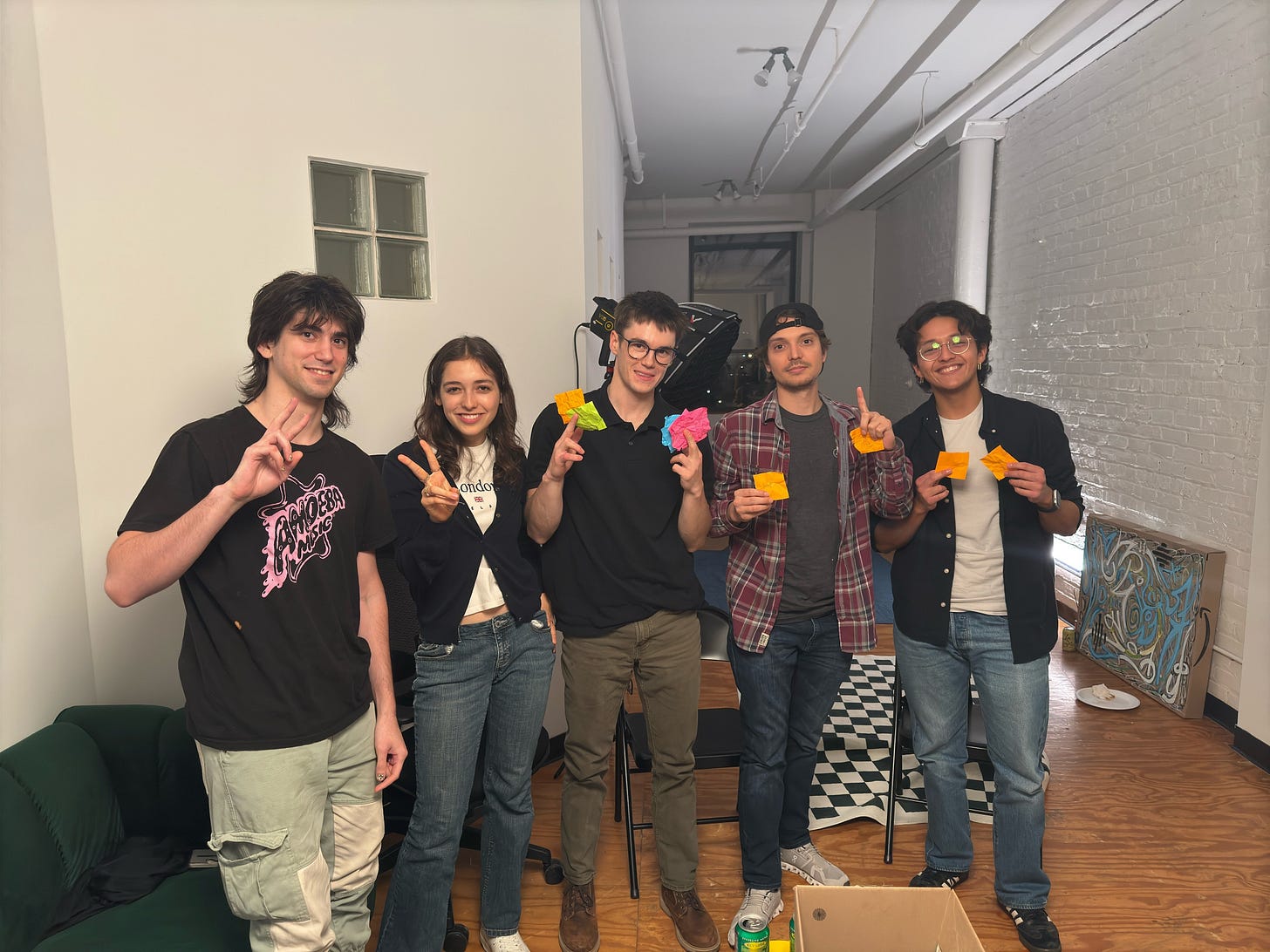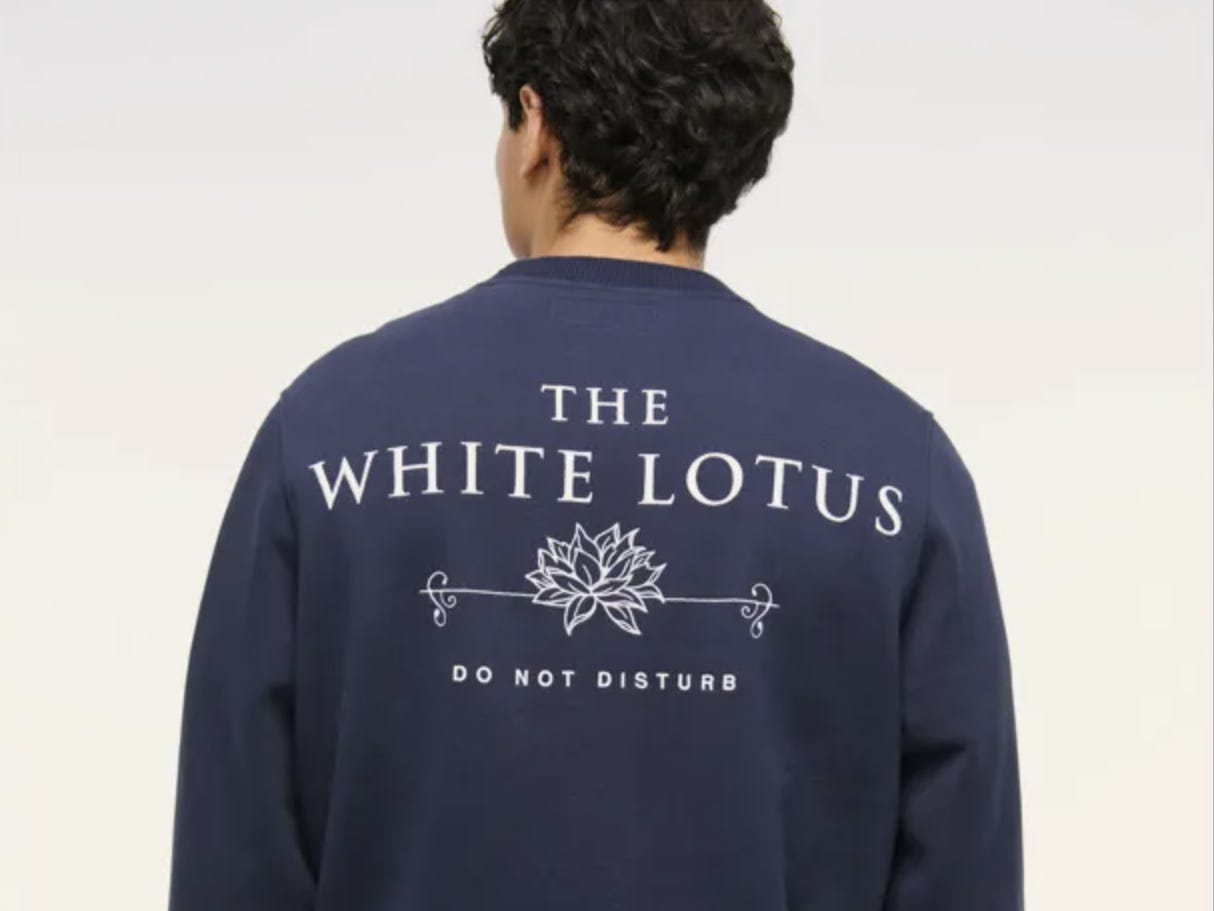Learnings From Speaking at the White House 🏛️
And a studio housewarming recap
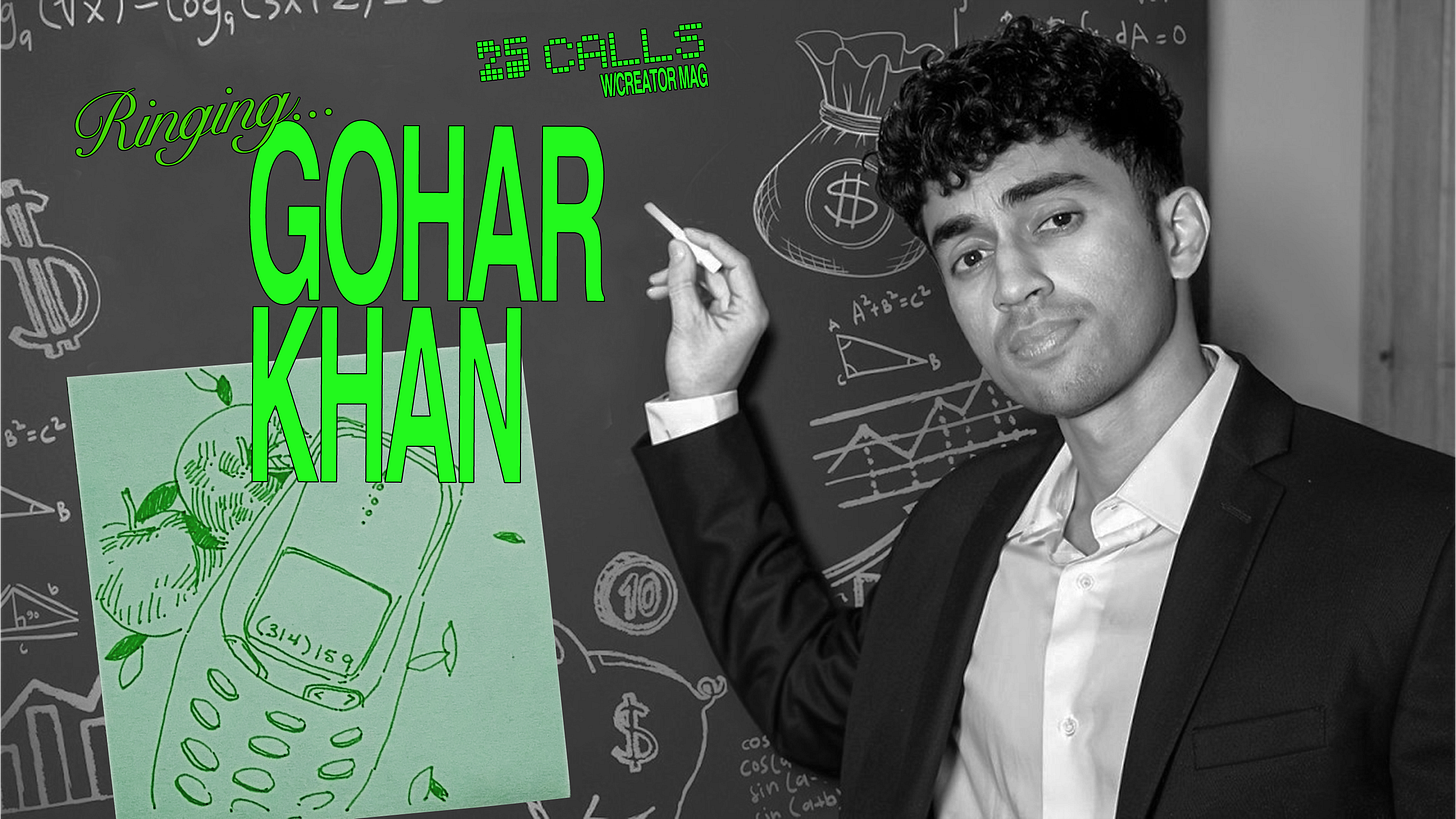
blog.twenty-seven // Last blog, I mentioned a big step for us here at Powder Blue: We opened up a studio space in Chicago.
The reasoning is twofold. First, our team simply wanted a place to meet up every day as we develop our upcoming season of Creator Mag and tackle additional projects as they come up. We found a perfect artist loft space for our day-to-day needs—from shooting product photography and filming documentary scenes to recording voiceovers and writing each zine.
Second, our mission is to Make the Internet Feel Smaller. More accessible, less omnipresent. The foundation of the creative neighborhood we’re building, therefore, sits on regular gatherings—think film premieres, co-working sessions, and storytelling nights. What better place to play host than our studio?
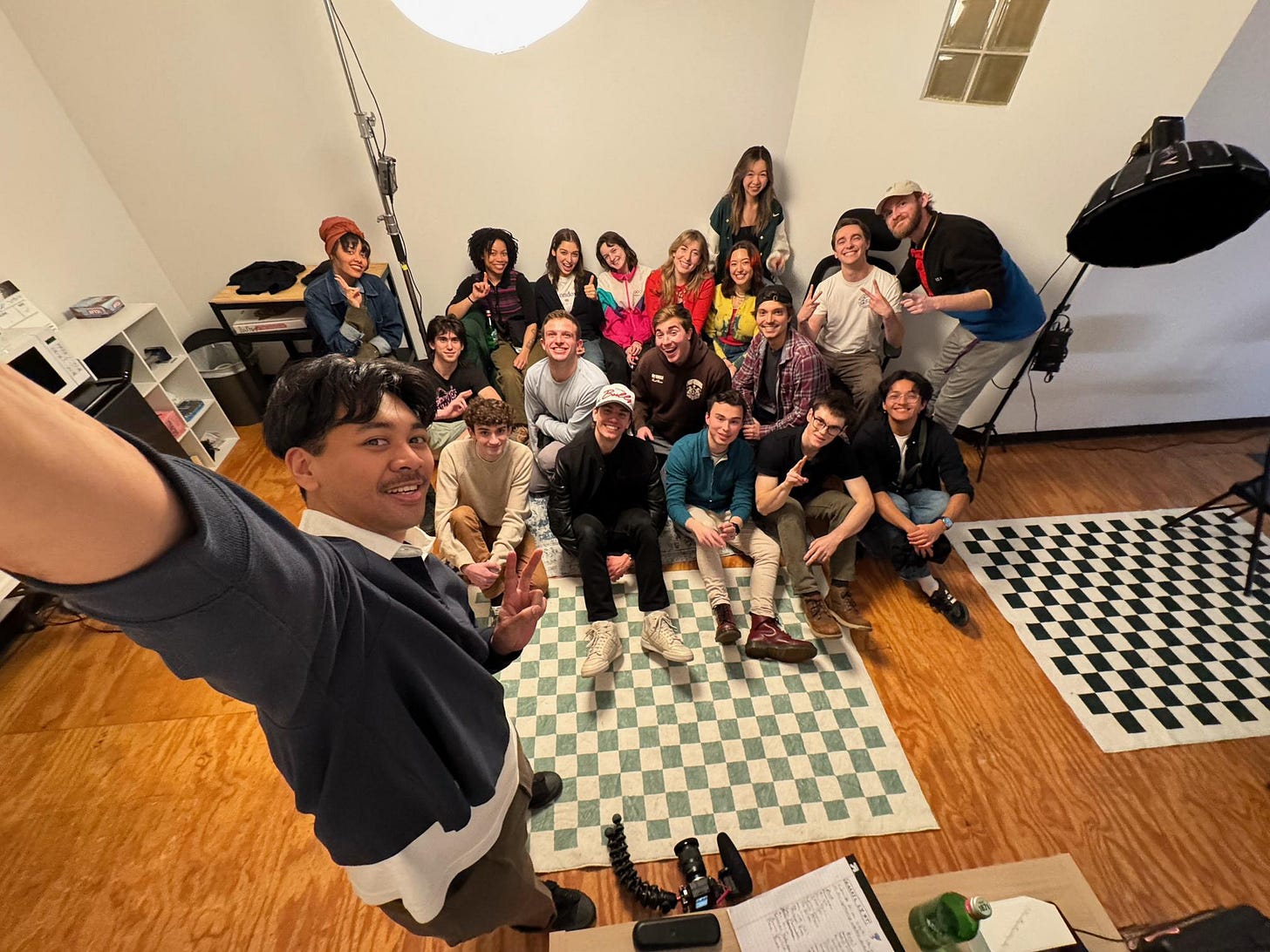
We kicked things off with our housewarming yesterday. The deep dish from Lou’s went quick; the interior design recs were well-received. Shout-out to everyone who pulled through, and congrats again to Team Two for winning our inaugural game of Fishbowl—your achievement has already been memorialized via a sticky note scoreboard placed on the wall.
I’ll share more from our housewarming down below, along with more info on this week’s gathering. Before that, however, here’s our latest conversation from our “Twenty-Five Calls For 2025” series, featuring educational creator Gohar Khan.*
— NGL
P.S. Last blog, we talked with Bibi-Jane Angelica about allowing ourselves to dream big—while dreaming about exactly what we’re doing, only better. You can read more here.
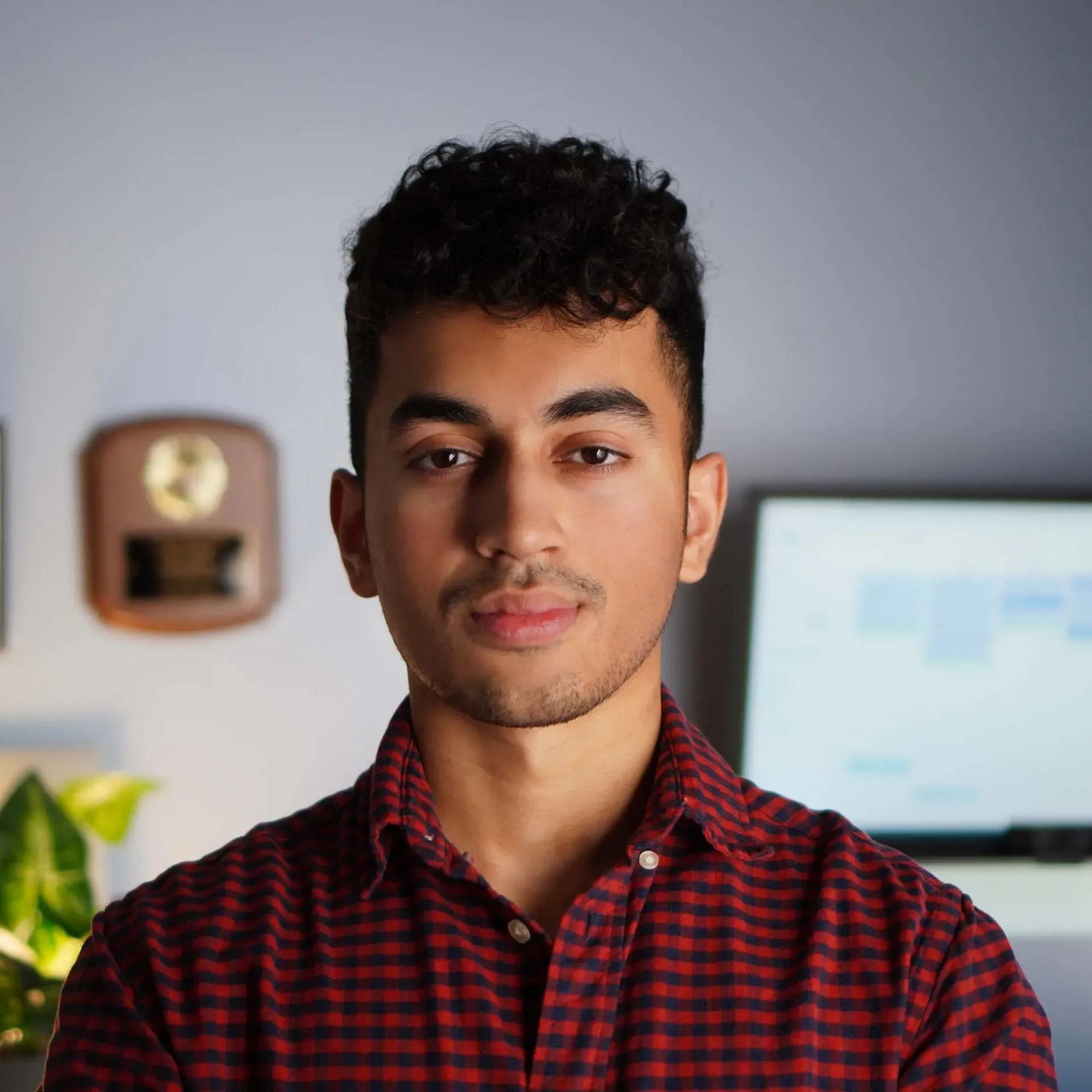
Gohar Khan is an educational creator known as “Gohar’s Guide” online. He shares tips on everything from studying to college applications—and even offers personalized consulting on the latter through his company, Next Admit.
The following conversation has been edited and condensed for clarity.
Nate Graber-Lipperman: Hey Gohar! What was your biggest win from 2024?
Gohar Khan: I think my biggest win was speaking at the White House.
My involvement in the political scene in 2024 was very unexpected. It started off with the World Economic Forum in January. I attended Davos and had the opportunity to interview [author and professor] Adam Grant, and sort of speak on AI and the “creator economy.”
Later on in the year, I was at a YouTube creator roundtable in DC, where I talked with White House staff about what it means to be a creator and my concerns, for example, with artificial intelligence. Somehow, I parlayed that one experience into speaking at the White House’s inaugural Creator Economy Conference. It was a ten-minute conversation in which I got to sit in front of some of the biggest names in this space.
It was a validating moment for me as a creator because it felt like someone had taken notice—and not only took notice, but it was people at the highest levels of government who, you know, believed in the work that I was doing to help young people succeed both inside and outside of school.
Overall, definitely a hallmark moment not only for the year, but for my life.
NGL: Do you remember anything in particular from some of the conversations on Capitol Hill? Has anything really stuck with you?
GK: I guess two things stood out to me. One was how in all of these conversations—whether it was people in the offices of these different congresspeople, or whether it's these White House staffers themselves—everyone took an interest in how the government could support creators better.
So, for example, something as simple as registering a business and figuring out a NAICS code for tax purposes…that's super difficult. Like, there isn't one code that pertains to creators specifically. That was an issue that they spoke to us about and that they heard our concerns about.
Second, their conversations around AI were interesting. We were talking about creator rights and issues like watermarking, deepfakes. And these are all topics that I thought would be a bit more distant for the government. I didn't expect them to speak on such niche areas of artificial intelligence. But it was reassuring to see how they were very invested in our interests as creators.
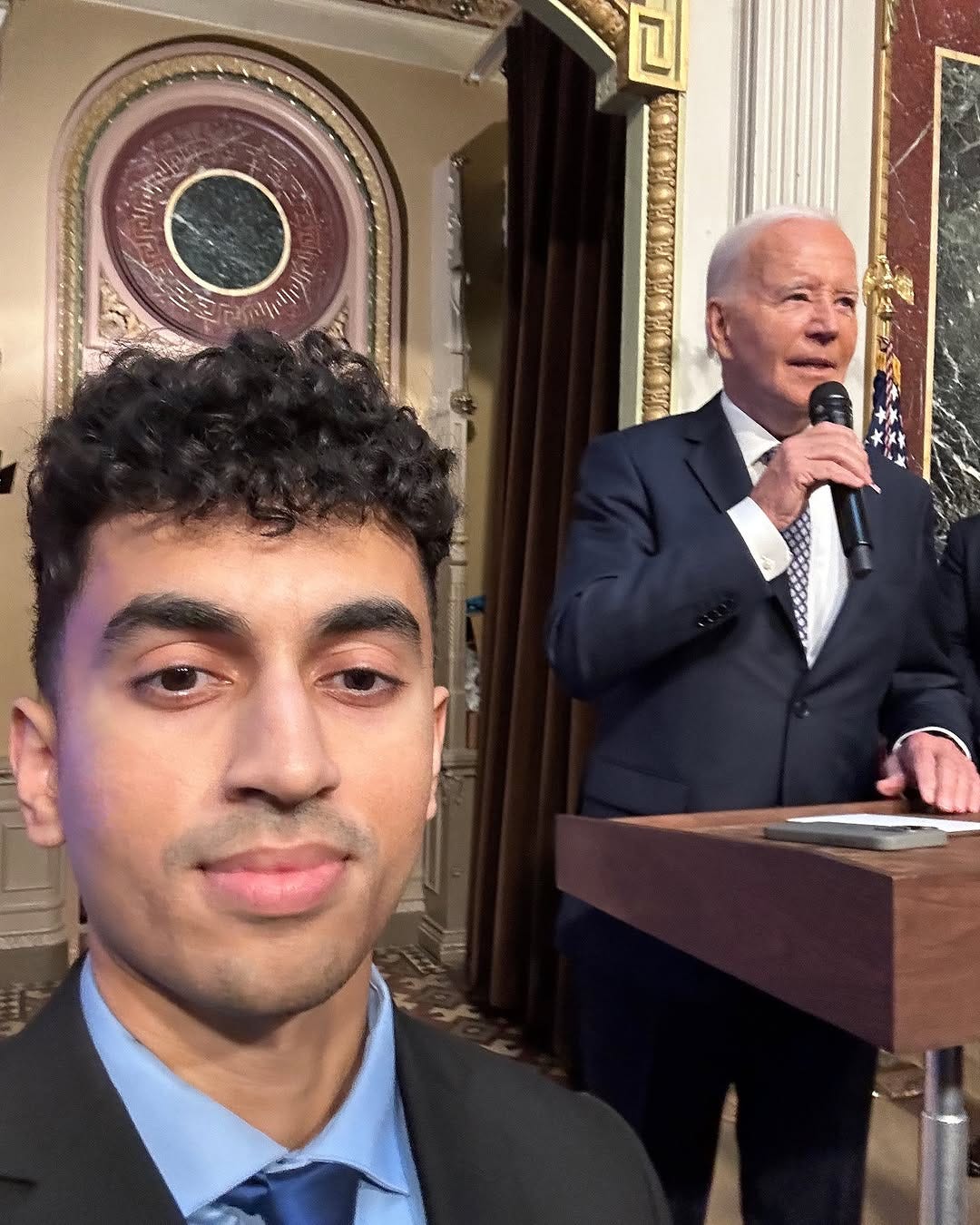
NGL: To know that the government is actually plugged in and knows the problems and what's at stake…it’s exciting to hear not only that those conversations are happening, but also that you’ve become a part of them.
GK: Yeah. I guess with the new administration, the big looming question is whether these conversations will continue. I believe yesterday Trump rescinded the executive order that Biden signed on the safe and responsible use of artificial intelligence.
That was an executive order YouTube had sent me to in November 2023—I got to see Biden sign it. It's crazy to think that yesterday, Trump came in and retracted that very executive order.
NGL: My second question for you is about the biggest learnings you're taking into 2025. It sounds like how you think about politics—and how you want to use your platform—is a big one.
GK: For the longest time, Gohar’s Guide has been rooted in objectivity—I talk about topics in a very matter-of-fact way. For example, credit cards versus debit cards, or what is the Pomodoro Technique?
What some of my experiences last year taught me is that people are following me not just for straight advice, but for my voice and for my thoughts and for my opinions. As a creator, my platform is not just for information—it's also for talking about issues like the college admissions process or financial aid or affirmative action.
These aren't topics that I necessarily leaned into heavily in 2024. But when you have a platform this large, I think it's important for creators to leverage their voice to affect change if they can do so—and not just focus on the vanity metrics. Which, you know, are volatile. Followers will come and go.
Yet you find purpose and meaning if you put your voice and your authentic heart behind what it is you make and the message that you want to convey, if that makes sense.
NGL: For sure. This element of using your platform in a way that’s informative, but not necessarily sticking to some lofty notion of objectivity.
GK: Exactly. And in a similar vein, a big learning has been just connecting with my audience, especially by leaning more into longform. Have my voice be present and build that rapport with my audience.
Shortform was great in terms of helping me achieve discovery. But I don’t want to just be a vehicle for information—I want to be someone people are connecting to, as I also discover novel concepts or show the world from different aspects.
“You find purpose and meaning if you put your voice and your authentic heart behind what it is you make and the message that you want to convey.” —Gohar Khan
One quick example: In 2024, I made a video at Harvard about the hardest math class in the world. And that was the most fun I've ever had working on a video. It's one of the most popular longform videos I've made, sure. But I was also taking my viewers along for a journey and sort of immersing them into an experience, and that was fulfilling for me.
NGL: That's really cool to hear. Another question I've also been asking people—whether it’s another creator who has inspired you or a message you received from a fan—is around what's giving you hope right now.
GK: Two things come to mind. First, something called the YouTube New Wave—I believe you actually covered this in depth.** Just seeing that whole movement come to life and seeing storytelling, cinematography, and content that’s slower take the limelight. I think that's just super refreshing as a creator because for the longest time we thought that we had to lean into attention hacks and colorful packaging in order to sustain a career on YouTube.
Second, the DMs that I've been getting lately have inspired me to continue making videos. I recently received a message from an international student in India who didn't have a college counselor, but because of my videos was able to navigate the college admissions process and get into Dartmouth, which was incredible to hear. It makes me hopeful that students are using information I’m providing to change the trajectory of their lives.
NGL: That's really cool. I remember Cleo Abram telling me how she knows she's succeeding if one day, an engineering student invents some new technology—then reaches out to say they came up with their idea after watching one of her videos.
It’s a similar, really cool mission to kind of aspire to.
GK: One hundred percent.
You can follow along with Gohar’s journey here.
Five Things I Think (I Think)
I think I should probably reintroduce myself. There’s a lot of new faces here. For some lore, last August, I decided to start writing this blog every Sunday evening as a way to share observations on the creator world—and reconnect with friends and family.
Since then, I…
uploaded my short film;
drove across the country;
helped my partner, Vicky, move to Switzerland for her new job;
and left my previous job (working for Colin and Samir) to build something new.***
I think that that something new is actually something old. I decided to relaunch Powder Blue—the creative studio I started in college—alongside some incredibly talented collaborators. We view our flagship product, Creator Mag, as the Rolling Stone for the creator world: a beautiful print zine with premier storytelling inside.
To spin the thread further: In a confusing time, young creative people are trying to find our place. By profiling the rising creators impacting culture—and welcoming readers into our world—we aim to make the internet feel smaller.
We have ambitious plans to build that world through our product drops, behind-the-scenes mini-docs, and regular gatherings. If you’re interested in following along, or even attending an event or two…congrats! You’ve come to the right place.
I think you should never underestimate the importance of where you place chairs. About twenty minutes before our first gathering on Saturday, I told Shua that we should move three chairs from the “social” section of the studio (i.e. where our sofa and TV sit; we don’t have much furniture yet lol) to the middle hallway. This way, I surmised, people could break off into side conversations as they saw fit before we all played a game of Fishbowl together.
This assumption proved correct pretty much within minutes of the first person arriving. Everywhere I looked, people seemed to be hitting it off almost immediately; we didn’t end up playing any games until three hours in because several conversations were raging at all times.
Tl;Dr — I have a newfound respect for the thoughtfulness interior designers put into their craft. Never underestimate the importance of where you place chairs.
I think the Windy City needs more spaces for creatives. Compared to the coasts, Chicago is often overlooked as a creative hotbed. But the country’s third-biggest city has a bustling blend of artists, writers, photographers, and filmmakers. Still, friends spread across these various communities have told me that each group tends to stick to itself, which can lead to a feeling of isolation.
We’re not naive—we know we won’t change anything overnight. Nonetheless, we aim to chip away at the narrative, week by week. Shua likes to say that it takes a village to help foster the next great creative, and we’re putting our money where our mouth is, starting with our next gathering.
Around Thursday afternoon? Come join a (free) co-working session at our studio with a group of creative peers. Spots are limited—you can sign up here.
I think the delicate dance between art and commerce is going strong in 2025. This column is usually reserved for observations from around the broader creator/culture/media world. So here’s a parting one: HBO and Apple’s respective marketing campaigns for current seasons of The White Lotus and Severance are a prime lens into the tradeoff between a writer’s pen and the machine that makes it consumable for the masses.
Case in point: Per The Hollywood Reporter, HBO just rolled out a “resort-ready” apparel collection alongside Abercrombie & Fitch to celebrate the return of The White Lotus (out February 16). In the case of Severance, Tim Cook appeared in a promo video for the show, which sees the Apple CEO take the infamous elevator down to the “severed” floor.
I guess we can ignore the fact that The White Lotus is a commentary on how the ultra-wealthy exploit the people (and places) around them. Or how Severance critiques our corporatized, work-centered culture.
For now, you can find me furiously searching the Severance subreddit for winning fan theories. She’s allllliiiiiivvvvvveeeee!
Thanks for reading! Shoot me a reply, comment, or DM if anything resonated with you in particular—I respond to them all.
* I actually met Gohar on Capitol Hill in 2023. I was living in D.C. and a couple months into writing Publish when the TikTok ban started to speed up. I took the Red Line over to a press conference held by Jamaal Bowman, and Gohar walked up to me afterwards after recognizing my Press Publish hat. Small world!
** I did! You can read more here.
*** At some point along the way, I arm-wrestled Hank Green, too.




